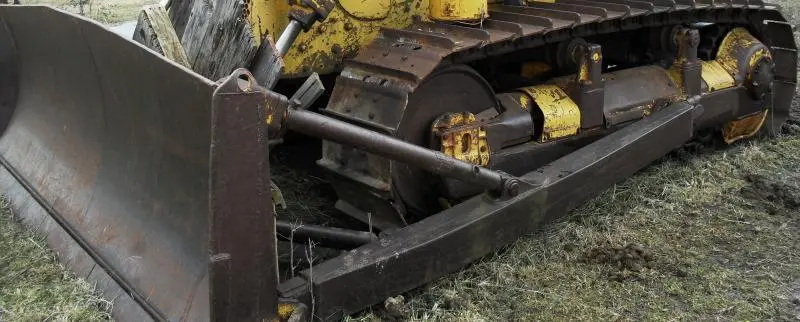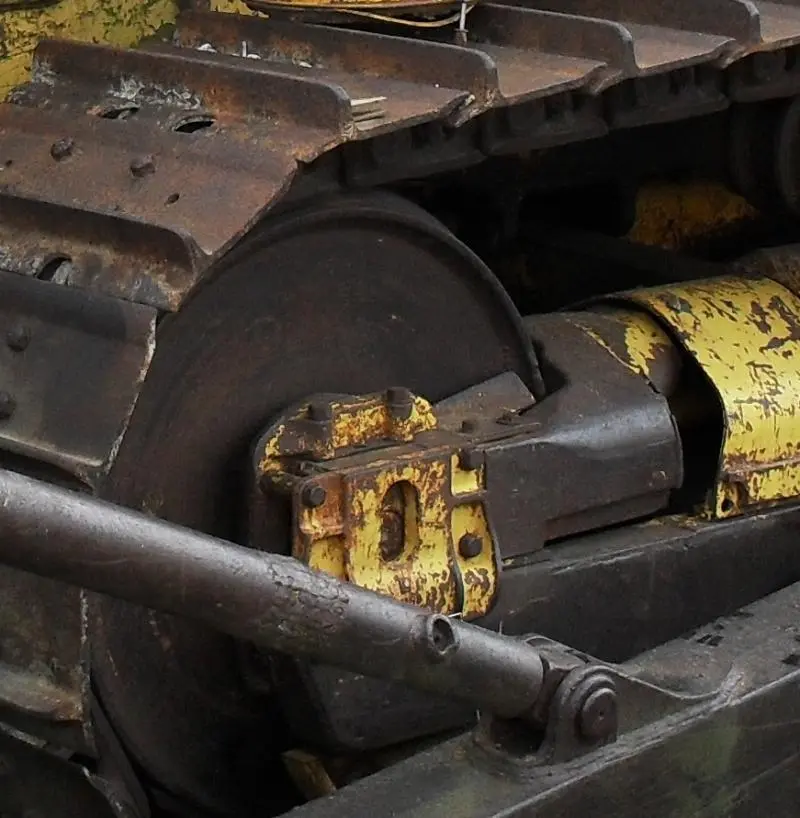
I'll wait and see what the experts say before throwing my 20 cents worth in as almost everything I ever say on here is always corrected by some
Dunno if you have a low high idler adjustment on this model plenty here will be able tell you the answer to that for you
Paul

Ha, I confirmed in the manual that it does but says absolutely NOTHING about checking or changing it! Only that unless otherwise requested, the machine will always ship in the low position. When looking at the slot in the idler bracket where the idler axle is, the axle appears to be at the lower part of that slot. Not sure if there if that is the indicator or what. I will try to snag a better pic here.
Idlers are in the low position, I would say that 6" cuts in clay are ambitious, try about 2" and practice, you dig, the nose drops, you predict the drop and lift the blade a touch, as the complete machine drops into the cut you lower the blade a little, easy to say but more difficult in practice. Experienced operators will tell you much more than I know.
I understand what you are saying. As you cut, the front of the tractor will eventually drop into that cut so you bring the blade up. But as the back of the machine gets in the cut, you have to take the blade back down as you are now "in the cut". I think most of my issue is I am realizing most of my experience has been back filling from a spoil pile on level ground. That becomes rather easy.
I think the toughest part is I am used to machinery that is lighter, even a smaller dozer, that just won't dig, so you get more of a scraping action. It became obvious in the very first cut that the D7 had enough weight and power to swallow itself in these clays. The problem has been when the machine nose drops, I am already screwed because I just took a big notch out. About every pass I made showed a hogged out area where I dug in, followed by a much higher area where over compensated and brought the machine out of the cut.
I just figured I might be able to adjust the machine to actually reduce its 'hunger' and let it scrape more. I most likely have the wrong machine for the more final work that I am doing right now, but at least it will force me to get good at it!
Pitch [tilt] the blade forward some, extend tilt braces, and take shallower cuts at first, when your blade gets half filled then you can apply more down pressure to what the tractor will handle and push without spinning the tracks. The operators manual for the blade explains that tilting the blade forward will reduce digging and tilting it back will increase digging action. Also operate tractor at high rpm and first gear for better control of hydraulics and load capability
This operator does pretty good working in heavy clay.
https://youtu.be/fEgI7wDh0u0.
[quote="Rome K/G"]Pitch [tilt] the blade forward some, extend tilt braces, and take shallower cuts at first, when your blade gets half filled then you can apply more down pressure to what the tractor will handle and push without spinning the tracks. The operators manual for the blade explains that tilting the blade forward will reduce digging and tilting it back will increase digging action. Also operate tractor at high rpm and first gear for better control of hydraulics and load capability
This operator does pretty good working in heavy clay.
https://youtu.be/fEgI7wDh0u0.[/quote]
THIS^^^^^ to much suction for the type of material. play around with the pitch until you get it right and then let us know how it works.
[quote="Rome K/G"]Pitch [tilt] the blade forward some, extend tilt braces, and take shallower cuts at first, when your blade gets half filled then you can apply more down pressure to what the tractor will handle and push without spinning the tracks. The operators manual for the blade explains that tilting the blade forward will reduce digging and tilting it back will increase digging action. Also operate tractor at high rpm and first gear for better control of hydraulics and load capability
This operator does pretty good working in heavy clay.
https://youtu.be/fEgI7wDh0u0.[/quote]
THIS^^^^^ to much suction for the type of material. play around with the pitch until you get it right and then let us know how it works.
For what its worth dug my new pond in bright Blue clay - not sure of the attack angle on the D2 blade but I never adjusted anything. Could get sheets of the pottery clay to role up in front of blade -( maybe 2- 6"). Could not touch it if left exposed to dry for a week. Bob
I can promise most. Everyone here knows more than me about this, but here is my learned from experience method. What ever cut you start with, stay there. If I try to raise the blade just a bit, when the tracks catch up to the cut, then you get a dip, then another and so on.
At that point I have made 100 yards of whoop d doos and can only fix it with another pass.
Small bites, commit to that, and make a full pass. Hey , that's works on my dirt, which is not sticky clay.